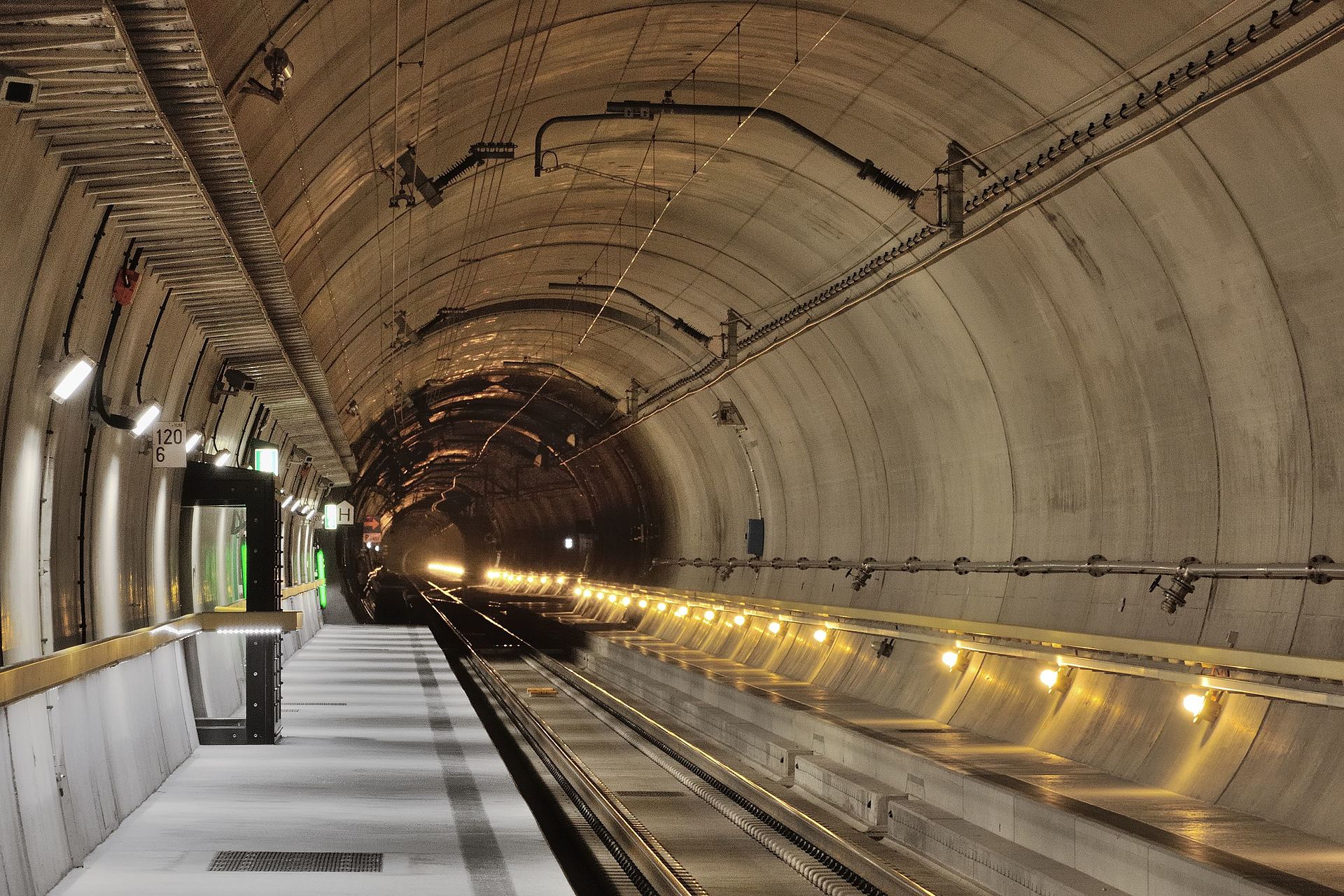

Earlier this week, the Gotthard Base Tunnel became fully operational, reducing train journey times between Zurich and Milan by a whole hour and boosting the capacity of trans-Alpine rail traffic.
Plans for the world’s longest and deepest rail tunnel were approved in a referendum in 1992 and work started in 1999. It opened in June this year and on 11 December, the first passenger and freight trains began using the 57 kilometre link.
Two other tunnels connect the German-speaking part of Switzerland with the Italian-speaking canton of Ticino, but the decision to pursue a third was not only motivated by making travel faster but also to encourage more freight onto the rail network as opposed to the struggling road system.
In total, the artery will soon transport 9,000 passengers each day and accommodate 260 freight trains that are heavier and longer than those that travel through the existing Gotthard Tunnel.
Given mobile connectivity is ubiquitous in Swiss rail tunnels, and that you can make a call from the highest accessible peak in Europe (the Jungfraujoch), it should come as no surprise to learn that the Gotthard Base Tunnel has 4G connectivity throughout.
But the project is also an example of robust networking and the usefulness of the Internet of Things (IoT), according to Alcatel Lucent Enterprise (ALE).
The company says much of the infrastructure, such as sensors, surveillance cameras, ventilation, drainage, communications and monitoring systems are automated, necessitating the transmission of real time data.
Two separate networks have been constructed in each tunnel and ALE said the equipment used had to be robust and hardened to ensure safety and withstand the harsh conditions present in the middle of a mountain.
“When you include areas such as access tunnels and cross passages, we are actually talking about an area of approximately 152km that needs to be connected and secured,” says Laurent Moureau, general manager of ALE Switzerland.
“This area must be served by immensely reliable IP network connectivity throughout. Even minimal network disruption through inefficient data transfer or bottlenecking will have the potential to cause delays and even impact worker and passenger safety.
“The size of the tunnel complex and remoteness of some of the service areas means that many of the networking components must work in the middle of the tunnel for extended periods – far outside the safety of climate controlled data centres.
“But it’s not just the location. Parts of the tunnel can reach temperatures of up to 40°C and hit humidity levels of 70 percent, a far cry from the usual home of a data switch.
“Then there is the dust. Even in normal enterprise environments dust and airborne particles can cause problems eventually, but inside the railway tunnel it can cause serious problems for network components, as metal dust is kicked out from the train’s brakes.
“Add to this the electromagnetic interference and vibrations caused by everyday operations and you have an environment that would severely limit the lifespan of standard switching equipment and cause mechanical failure.”
All of the switches, access points and routers have embedded security, dynamic network performance and real time application delivery so equipment can be remotely served or dealt with as little as possible.
“Low levels of preventative and corrective maintenance are an absolute must when installing a network up to 2.3km under a mountain,” he adds. “These switches use convection cooling which relies on a heatsink rather than a fan to keep cool, minimising the danger of metallic particles entering the unit and damaging the internal electrical components.
“This specialised hardened network enables the Gotthard Tunnel to take IoT where standard networking cannot – guaranteeing the level of service required for the longest, safest and best connected tunnels in the world – transporting those 9,000 passengers every day in safety and comfort.”
Italy, White House issue joint statement condemning 'discriminatory' tech taxes as US seeks to end…
Italian newspaper Il Foglio says four-page AI-generated supplement published every day for a month shows…
Huawei launches Titanium edition of Eyewear 2 smart glasses with gesture controls and AI-powered simultaneous…
Gerald Yin, founder, chairman and chief executive of key Chinese chip tools maker AMEC, drops…
Intel reportedly tells clients in China some of its AI chips will now require export…
New Intel chief executive Lip-Bu Tan flattens company's leadership structure as he seeks to end…